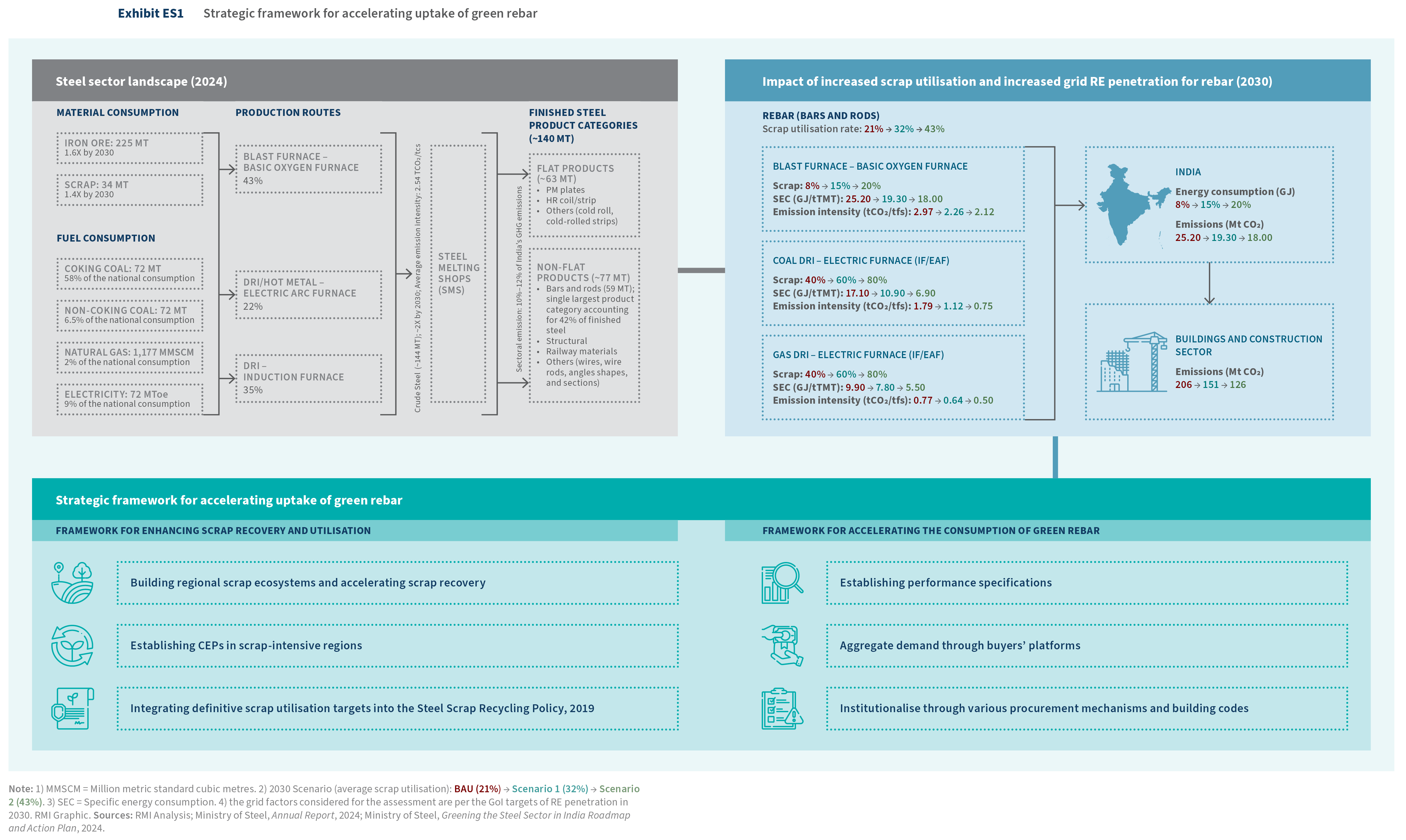DOWNLOAD THE REPORT BELOW
India’s built environment is expanding rapidly, driven by urbanisation and large-scale infrastructure development. At the heart of this growth lies the steel reinforcement bar, or rebar, the hidden skeleton that gives modern construction its strength.
Rebar is categorised under the broader steel product category of bars and rods, which accounts for 42% (59 MT) of India’s finished steel consumption in FY24. With reinforced cement concrete (RCC) expected to remain the dominant construction method, demand is set to rise sharply as India’s urban floor area is projected to more than double to 35 billion square metres by 2040. Rebar will continue to serve as the structural backbone of India’s growth, embedded in almost every residential, commercial, and infrastructure project.
This growth carries a significant environmental cost. Steel contributes an estimated 15%–25% of embodied carbon in RCC buildings that can be locked into structures for decades if neglected. India’s finished steel consumption is expected to nearly double to 230 MT by 2030. India’s ambitious development aspirations and pursuit of Aatmanirbharta (self-reliance) depend not only on expanding steel production but also on transforming the way steel is produced, used, and recovered. Recognising this imperative, the Ministry of Steel recently released the Green Steel Taxonomy. However, given its scale, structural importance, and distinct performance requirements, rebar warrants particular focus within these efforts.
This report highlights the potential for rebar to spearhead India’s steel decarbonisation journey. Rebar presents a distinction — a near-term, scalable pathway for decarbonisation. While breakthrough technologies like green hydrogen and carbon capture remain long-term solutions, scrap-based rebar produced using renewable electricity can reduce emissions at scale today, not decades from now.
The report underscores rebar’s pivotal role in India’s steel decarbonisation and evaluates the sector’s readiness for a green transition. It quantifies the impact of key decarbonisation levers — scrap utilisation, energy efficiency and renewable electricity — and projects future reductions in energy use and emissions intensity across steelmaking routes, in line with the Ministry of Steel’s 2030 targets.
By maximising scrap use and energy efficiency, and integrating renewable electricity, India can scale up green rebar production to meet growing demand. Realising this potential, however, will require addressing systemic challenges, including limited high-quality scrap availability, restrictive electricity pricing, and inconsistent product-level emissions data. To this end, the report outlines a strategic framework to align producers, buyers, and policymakers in developing infrastructure for enhanced scrap recovery and in accelerating the market uptake of green rebar.

This analysis is informed by a sectoral deep dive undertaken by RMI India Foundation, in partnership with the Building Materials and Technology Promotion Council (BMTPC) and the Lodha Foundation. It draws on plant visits, stakeholder consultations, webinars, and earlier published work.